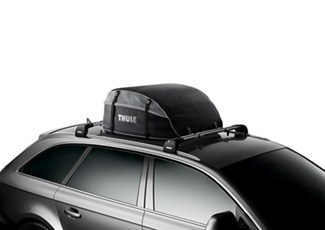In this article, you will discover the essential steps to securely attaching a luggage bag to a roof rack. Whether you’re preparing for a road trip or just need extra storage space, properly securing your luggage bag is crucial for a safe and worry-free journey. We will guide you through the process, ensuring that your belongings are tightly fastened and protected throughout your travels. So, let’s get started and learn how to connect your luggage bag to a roof rack with ease and confidence.
Choosing the Right Roof Rack
When it comes to choosing a roof rack for your vehicle, there are several factors to consider. One of the most important considerations is the weight capacity of the roof rack. You’ll want to make sure that the roof rack can safely support the weight of your luggage bag and any other items you may need to transport.
Additionally, it’s essential to ensure that the roof rack you choose is compatible with your specific vehicle model. Different vehicles have different roof designs, and not all roof racks are suitable for every vehicle. Take the time to research and find a roof rack that is specifically designed to fit your vehicle and can be securely attached to its roof.
Lastly, you’ll want to select the appropriate type of roof rack for your needs. There are various types available, such as roof-mounted racks, crossbar racks, and cargo baskets. Each type has its own advantages and limitations, so it’s important to determine which one will best suit your requirements.
Preparation and Safety Measures
Before attaching your luggage bag to the roof rack, it’s important to gather the necessary tools. This may include straps, tie-downs, or any other equipment required to secure the bag properly. Having these items readily available will make the process much smoother and more efficient.
Once you have gathered the necessary tools, take the time to read the manufacturer’s instructions. These instructions will provide you with valuable information about the proper installation and usage of the roof rack. Following the instructions carefully will ensure that you attach the luggage bag correctly and reduce the risk of any accidents or damage.
Before attaching the luggage bag, it is essential to ensure that the roof rack is clean and free of any debris. This will not only ensure a secure attachment but also prevent any scratches or damage to the bag or rack. Simply wipe down the roof rack with a clean cloth or brush away any dirt or dust that may have accumulated.
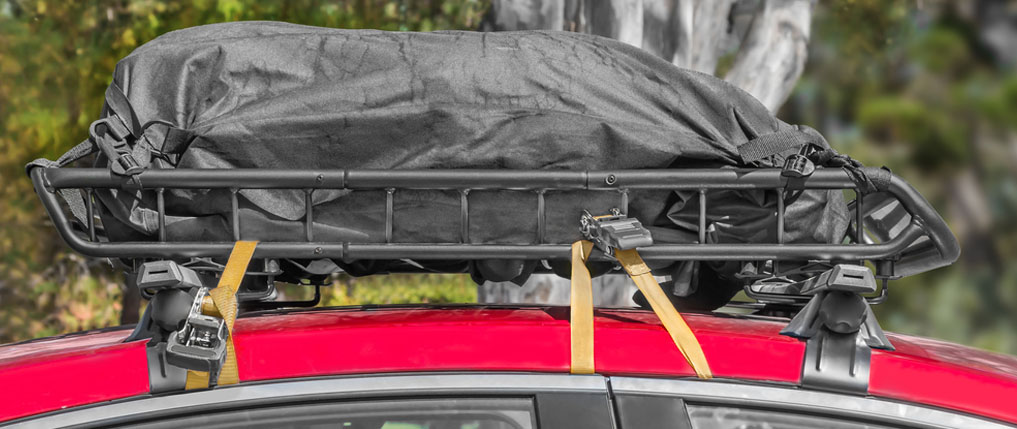
This image is property of media.pelican.com.
Measuring and Positioning the Luggage Bag
To ensure a proper fit on the roof rack, you’ll need to measure the dimensions of the luggage bag. This will help you determine how much space the bag will occupy and whether it will fit comfortably on the rack without interfering with any vehicle components.
Once you have measured the dimensions, carefully determine the optimal position for the luggage bag on the roof rack. Consider factors such as weight distribution, aerodynamics, and the size of the bag compared to the overall roof rack space. Finding the right position will ensure stability and prevent any potential hazards while driving.
In addition to finding the optimal position, it is crucial to allow sufficient clearance for opening vehicle doors. Make sure the luggage bag is positioned in a way that enables you to open and close the vehicle doors without any obstructions. This will allow for easy access to the bag and prevent any inconvenience during your travels.
Attaching the Luggage Bag to the Roof Rack
When attaching the luggage bag to the roof rack, it is important to use appropriate straps or tie-downs. These will provide the necessary support and security to keep the bag in place during your journey. Make sure to choose straps that are strong and durable enough to withstand the weight and forces exerted on the bag.
Threading the straps through the rack’s attachment points is the next step. These attachment points are specifically designed to secure the bag to the roof rack. Proper threading ensures that the straps are securely fastened and prevent any slipping or movement of the bag while in transit.
As you secure the luggage bag, ensure an even distribution of weight. Uneven weight distribution can affect the stability and handling of the vehicle. Place heavier items towards the center of the bag and distribute lighter items towards the edges. This will help maintain balance and minimize any impact on the vehicle’s performance.
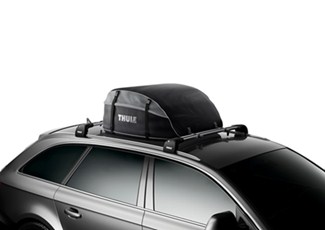
This image is property of www.etrailer.com.
Securing the Luggage Bag in Place
Once the straps are threaded through the attachment points, it’s time to tighten them firmly. Apply sufficient tension to secure the bag tightly to the roof rack. However, be cautious not to over-tighten, as this can cause unnecessary strain on the straps or damage the bag.
After tightening the straps, double-check for any loose or twisted straps. Loose or twisted straps can compromise the security of the luggage bag and lead to potential accidents or damage to your vehicle. Take a moment to ensure that all straps are properly aligned and securely fastened.
For added safety, consider using additional measures such as bungee cords or netting. These can provide an extra layer of security and help prevent the bag from shifting or opening during transport. By securing the bag using these additional methods, you can have peace of mind knowing that your belongings are well-protected.
Protection from Theft or Accidental Opening
To protect your luggage bag from theft or accidental opening during your journey, consider using locks or security cables. These can be attached to the zippers or handles of the bag, adding an extra layer of security. By using locks or cables, you can deter potential thieves and ensure that your belongings remain safe and secure.
Another way to protect the luggage bag is by covering it with a waterproof tarp or cover. This will protect the bag and its contents from rain, snow, or any other adverse weather conditions. By keeping the bag dry, you can prevent any potential damage to its contents and ensure that everything arrives at your destination in good condition.
It is also important to avoid displaying high-value items on the roof rack. Visible high-value items can attract attention and increase the risk of theft. By keeping valuable items out of sight or securing them inside the luggage bag, you can lower the chances of becoming a target for thieves.
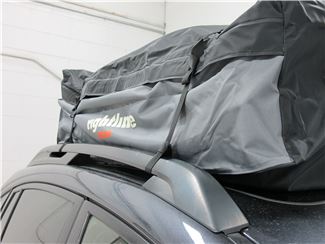
This image is property of www.etrailer.com.
Regularly Inspecting the Setup
During stops or breaks in your journey, it is essential to check the tightness of the straps. Continuous vibration or changes in road conditions can cause the straps to loosen over time. By periodically checking the tightness, you can ensure that the luggage bag remains securely attached to the roof rack throughout your trip.
Additionally, it is important to ensure that there is proper clearance between the luggage bag and your vehicle. Regularly inspect the setup to make sure that the bag is not rubbing against any vehicle components, such as antennas or roof rails. Any signs of rubbing or scraping should be addressed promptly to prevent potential damage.
Inspecting for signs of wear or damage is another crucial step in maintaining the setup’s integrity. Regularly check the straps, attachment points, and the luggage bag itself for any wear or tear. If any damage is detected, it is important to replace or repair the affected components before embarking on your next journey.
Driving with a Luggage Bag on the Roof Rack
When driving with a luggage bag on the roof rack, it’s important to maintain an appropriate speed and avoid sudden maneuvers. Higher speeds or abrupt turns can affect the stability of the vehicle and potentially cause the luggage bag to shift or become unbalanced. Drive responsibly and maintain a safe speed to ensure the safety of yourself and others on the road.
While driving, monitor the handling and stability of your vehicle. Pay attention to any changes, such as excessive swaying or vibrations, which may indicate an issue with the luggage bag’s attachment or balance. If you notice any abnormalities, it’s best to pull over and inspect the setup before continuing your journey.
Be aware of height restrictions and low clearance areas, such as tunnels or parking garages. The additional height of the luggage bag on the roof rack may exceed these restrictions, leading to potential damage to your vehicle or the bag itself. Always be mindful of the height of your vehicle and plan your routes accordingly to avoid any mishaps.

This image is property of i.ytimg.com.
Removing the Luggage Bag
When it’s time to remove the luggage bag from the roof rack, start by loosening and untying the straps. Carefully untie each knot or release the tension on the straps, ensuring that they are completely free from the attachment points. Take your time and handle each strap with care to prevent any damage to the bag or roof rack.
Once the straps are released, carefully lift and remove the bag from the roof rack. Ensure that you have a firm grip on the bag and lift it straight upwards to avoid any unnecessary strain or twisting. If the bag is too heavy or cumbersome to lift on your own, consider asking for assistance from a friend or family member to ensure a safe removal.
Finally, it’s important to store the roof rack properly for future use. Clean the roof rack, remove any debris, and find a suitable location to store it, such as a garage or storage shed. Storing the rack properly will help prolong its lifespan and ensure that it remains in good condition for your next adventure.
Additional Tips and Considerations
When packing your luggage bag, it is essential to distribute the weight evenly inside. Uneven weight distribution can affect the stability and handling of the vehicle, making it more challenging to drive safely. Take the time to arrange items inside the bag in a way that evenly distributes the weight and maintains balance.
To protect both the roof rack and your vehicle’s paint, consider using pads or cushions. These can be placed between the roof rack and the vehicle’s roof to prevent any scratches or damage caused by friction or vibrations. Investing in these protective measures will help preserve the appearance of your vehicle and maintain the integrity of the roof rack.
Lastly, it’s crucial to follow all local traffic and safety regulations when using a luggage bag on the roof rack. Familiarize yourself with any applicable laws or guidelines regarding the use of roof racks and ensure that you adhere to them at all times. By doing so, you can ensure not only your safety but also the safety of others on the road.
In conclusion, securely attaching a luggage bag to a roof rack requires careful consideration, proper preparation, and adherence to safety measures. By choosing the right roof rack, properly measuring and positioning the bag, and using appropriate straps and tie-downs, you can ensure a safe and secure attachment. Regular inspections, responsible driving, and following additional tips and considerations will further enhance the safety and effectiveness of your setup. With the right approach, you can enjoy worry-free travels while utilizing your roof rack to its full potential.
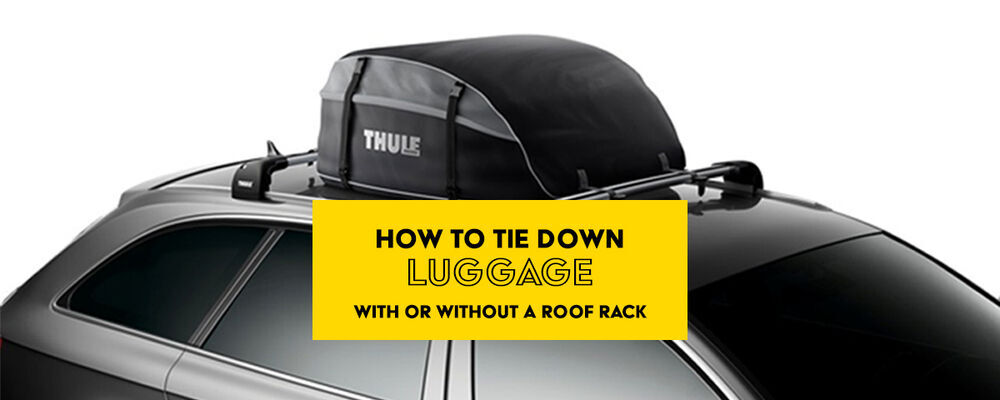
This image is property of www.etrailer.com.

